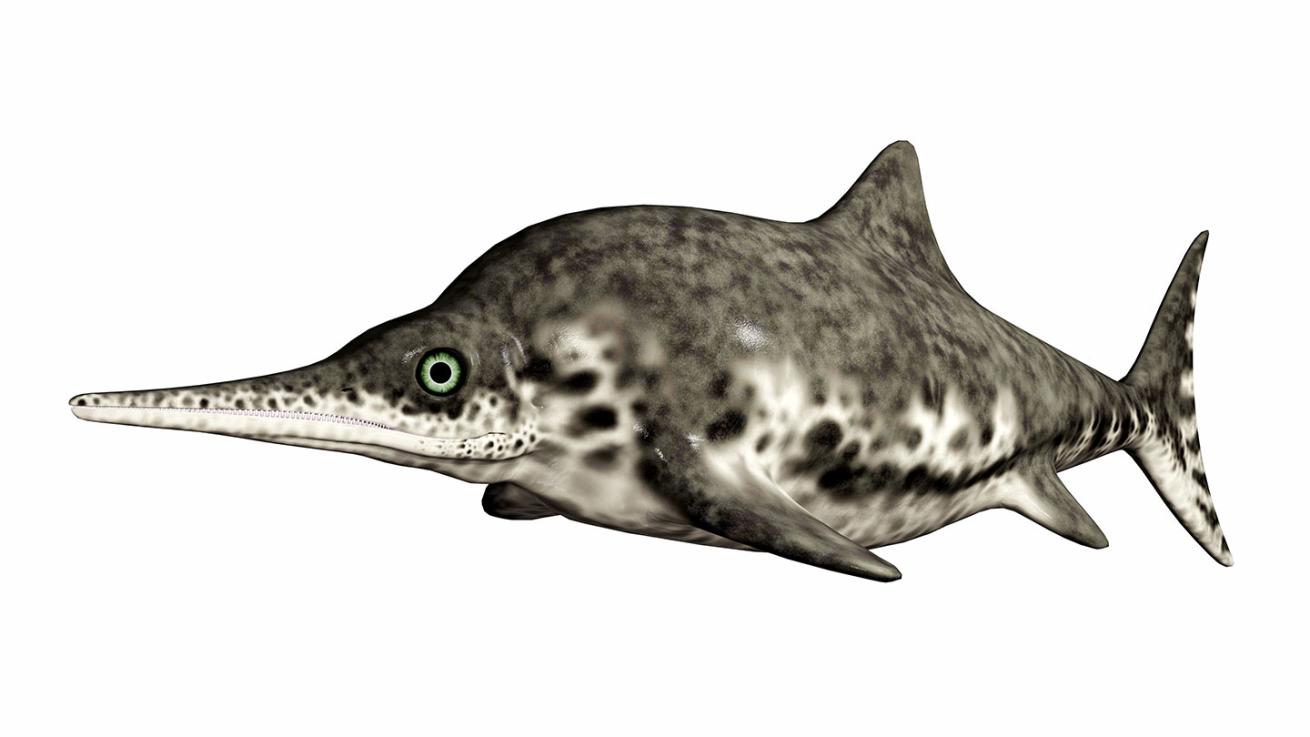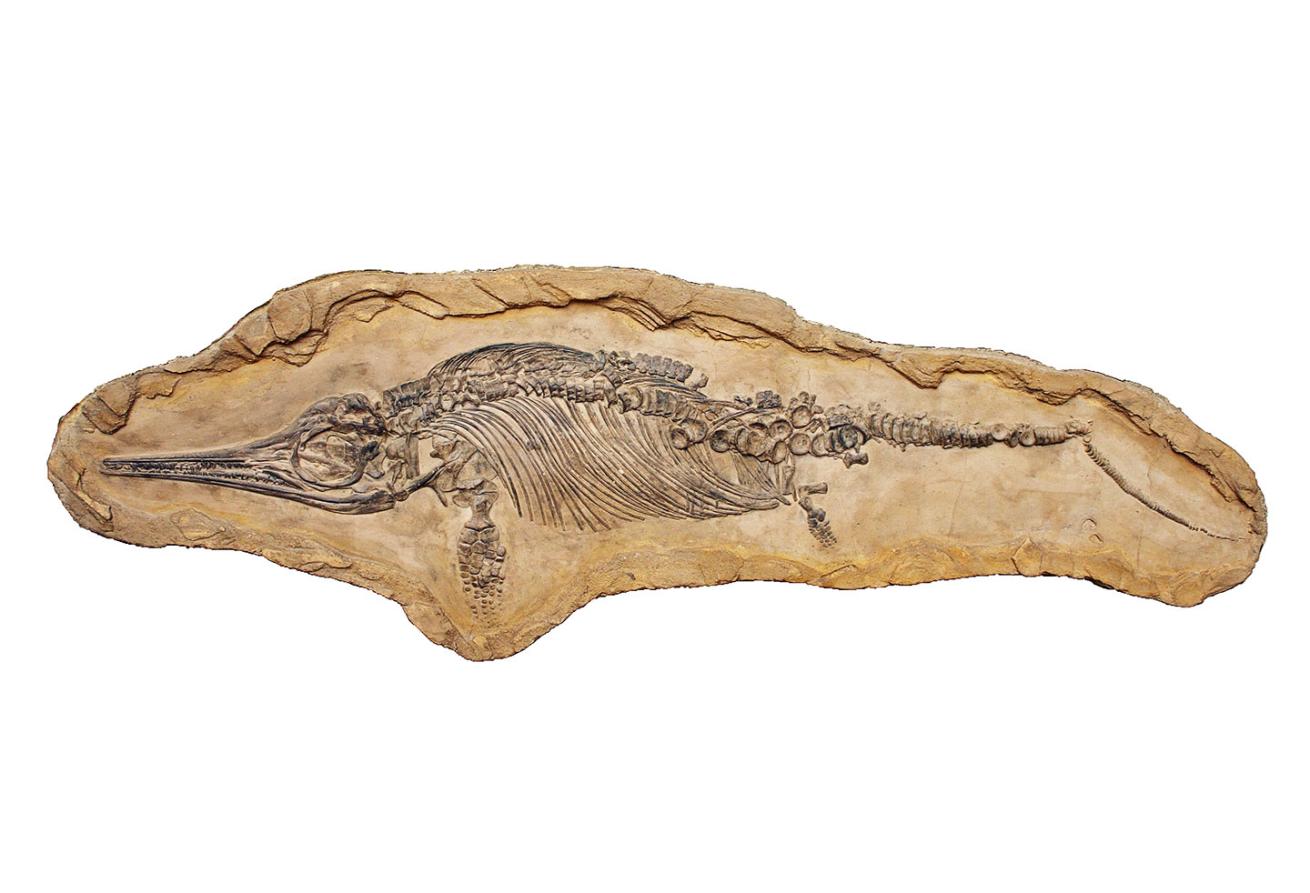Fossil Found in South Texas Could be Ichthyosaur

ShutterstockA reconstruction of what Ichthyosaurus communis looked like. Ichthyosaurs (Greek for "fish lizard”) thrived during much of the Mesozoic era first appearing about 250 million years ago.
A hike in the Eagle Ford Shale — a sedimentary rock formation deposited during the Late Cretaceous over much of the modern-day state of Texas — along a remote South Texas riverbed uncovered what might be a rare fossil of an ichthyosaur. Paleontologists now think that the fossil — found in limestone —could be that of the dolphin-like reptile that swam in ancient oceans some 90 million years ago. An ancient ocean covered Texas and other parts of North America millions of years ago.
The discovery was made nearly three years ago, in April 2014, by a petroleum geologist for the Texas Railroad Commission. It went largely unnoticed until a photo of the fossil appeared on the cover of the commission's 2016 annual report.

ShutterstockIchthyosaurs were abundant in the later Triassic and early Jurassic Period, until they were replaced as the top aquatic predators by another marine reptilian group, the Plesiosauria, in the later Jurassic and Cretaceous Period. Ichthyosaurs were not dinosaurs, but are classified as a separate group of marine vertebrates. In the Late Cretaceous, ichthyosaurs became extinct for unknown reasons.
Petroleum geologist James Harcourt was hiking with a group of colleagues on private land near the border town of Del Rio when they spotted what looked like a row of bones.
“Very rarely do we get really complete skeletons out of the Eagle Ford,” Josh Lively, a PhD candidate specializing in marine reptile fossils at the University of Texas in Austin, told the San Antonio Express-News. “Whenever you have an associated skeleton like this, when you multiple parts of the animal, it’s a really important find.”
Fossils of plesiosaurs and mosasaurs, which survived later than ichthyosaurs, are relatively common in Eagle Ford rocks, but this find is unique because it appears to be a nearly complete fossil of an ichthyosaur. Ichthyosaurs grew to about 6 feet long and had the sleek body of a dolphin and long, toothy jaws of a dinosaur. It is also significant because ichthyosaurs were disappearing from the seas when the Eagle Ford formed, between 88 and 96 million years ago.
Ichthyosaur is Nevada's official state fossil. Texas’s state fossil is Sauroposeidon (meaning "earthquake god lizard”).










